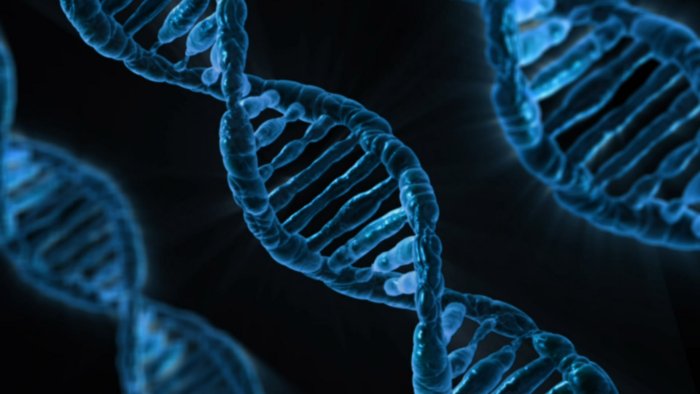Modern Humans Inherited DNA From A Mysterious And Unidentified Ancestor
Conny Waters – MessageToEagle.com – Now, a new analysis of ancient genomes by a team of researchers – Melissa Hubisz and Amy Williams of Cornell University and Adam Siepel of Cold Spring Harbor Laboratory – suggests that different branches of the human family tree interbred multiple times and that some humans carry DNA from an archaic, unknown ancestor.
It is now well-established that gene flow took place among various ancient hominin groups over the past several hundred thousand years.

The study of DNA is essential to learn more about how humans evolved. Credit: Public Domain
The interbreeding between humans who migrated out of Africa and came into contact with Neanderthals in Eurasia approximately 50,000 years ago, is considered the most well-studied example of archaic gene flow, but there is also another, a mysterious and unidentified ancestor who passed down his DNA to some of the humans.
Approximately 50,000 years ago, a group of humans migrated out of Africa and came in contact with Neanderthals in Eurasia. They interbred, however, it is not the only time that our ancient human ancestors and their relatives swapped DNA.
The sequencing of genomes from Neanderthals and a less well-known ancient group, the Denisovans, has provided many new insights into these interbreeding events and into the movement of ancient human populations.
In this study, the team developed an algorithm for analyzing genomes that can identify segments of DNA that came from other species, even if that gene flow occurred thousands of years ago and came from an unknown source.
See also:
Disappearance Of Neanderthals: Were Inbreeding And Demographic Shifts Responsible?
Genetic Fingerprints Of Unknown Species Discovered In Human DNA
They looked at genomes from two Neanderthals, a Denisovan and two African humans. The researchers found evidence that 3 percent of the Neanderthal genome came from ancient humans, and estimate that the interbreeding occurred between 200,000 and 300,000 years ago.
Furthermore, 1 percent of the Denisovan genome likely came from an unknown and more distant relative, possibly Homo erectus, and about 15% of these “super-archaic” regions may have been passed down to modern humans who are alive today.
The new findings that are described in the paper confirm previously reported cases of gene flow between ancient humans and their relatives and also point to new instances of interbreeding. Given the number of these events, the researchers say that genetic exchange was likely whenever two groups overlapped in time and space. Their new algorithm solves the challenging problem of identifying tiny remnants of gene flow that occurred hundreds of thousands of years ago when only a handful of ancient genomes are available. This algorithm may also be useful for studying gene flow in other species where interbreeding occurred, such as in wolves and dogs.
“What I think is exciting about this work is that it demonstrates what you can learn about deep human history by jointly reconstructing the full evolutionary history of a collection of sequences from both modern humans and archaic hominins,” said author Adam Siepel.
“This new algorithm that Melissa has developed, ARGweaver-D, is able to reach back further in time than any other computational method I’ve seen. It seems to be especially powerful for detecting ancient introgression.”
Written by Conny Waters – MessageToEagle.com – AncientPages.com Staff Writer










